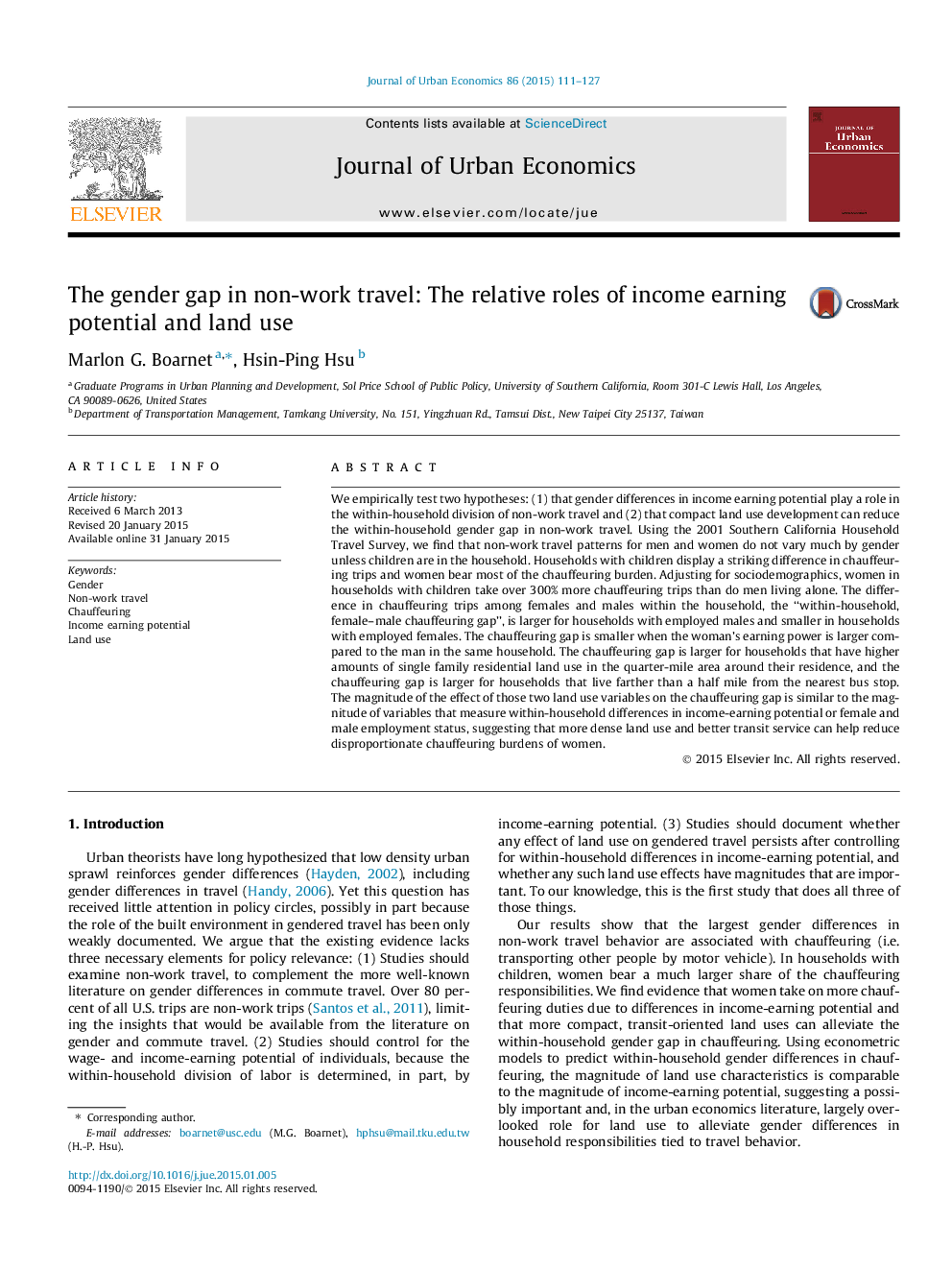| Article ID | Journal | Published Year | Pages | File Type |
|---|---|---|---|---|
| 971801 | Journal of Urban Economics | 2015 | 17 Pages |
We empirically test two hypotheses: (1) that gender differences in income earning potential play a role in the within-household division of non-work travel and (2) that compact land use development can reduce the within-household gender gap in non-work travel. Using the 2001 Southern California Household Travel Survey, we find that non-work travel patterns for men and women do not vary much by gender unless children are in the household. Households with children display a striking difference in chauffeuring trips and women bear most of the chauffeuring burden. Adjusting for sociodemographics, women in households with children take over 300% more chauffeuring trips than do men living alone. The difference in chauffeuring trips among females and males within the household, the “within-household, female–male chauffeuring gap”, is larger for households with employed males and smaller in households with employed females. The chauffeuring gap is smaller when the woman’s earning power is larger compared to the man in the same household. The chauffeuring gap is larger for households that have higher amounts of single family residential land use in the quarter-mile area around their residence, and the chauffeuring gap is larger for households that live farther than a half mile from the nearest bus stop. The magnitude of the effect of those two land use variables on the chauffeuring gap is similar to the magnitude of variables that measure within-household differences in income-earning potential or female and male employment status, suggesting that more dense land use and better transit service can help reduce disproportionate chauffeuring burdens of women.
